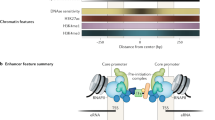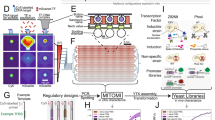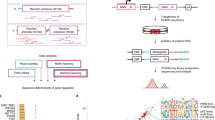Abstract
A STRIKING characteristic of many different eukaryotic transcriptional activators is their ability to activate gene expression synergistically. Thus, for example, the rat glucocorticoid receptor and the yeast activator GAL4 cooperatively activate transcription of a mammalian gene bearing binding sites for each of the proteins1: activation by both activators is greater than the sum of the effects of each working alone. It would seem unlikely that these two proteins from such different organisms directly interact; rather, the idea has been suggested that these and at least some other eukaryotic activators can work synergistically by simultaneously touching some part of the transcriptional machinery2. An important prediction of this idea is that synergy between two such activators would be seen under conditions where each is present at concentrations sufficiently high to saturate its site on DNA. In this paper we use transcription in vitro to confirm that prediction using a derivative of the yeast activator GAL4 and the mammalian transcription factor ATF. The accompanying paper3 describes a similar conclusion comparing the effects of singly and multiply bound GAL4 molecules.
This is a preview of subscription content, access via your institution
Access options
Subscribe to this journal
Receive 51 print issues and online access
$199.00 per year
only $3.90 per issue
Buy this article
- Purchase on Springer Link
- Instant access to full article PDF
Prices may be subject to local taxes which are calculated during checkout
Similar content being viewed by others
References
Kakidani, H. & Ptashne, M. Cell 52, 161–167 (1988).
Ptashne, M. Nature 335, 683–689 (1989).
Carey, M. F., Lin, Y.-S., Green, M. R. & Ptashne, M. Nature 345, 361–364 (1990).
Lin, Y.-S., Carey, M., Ptashne, M. & Green, M. R. Cell 54, 659–664 (1988).
Lin, Y.-S. & Green, M. R. Proc. natn. Acad. Sci. U.S.A. 86, 109–113 (1989).
Hai, T. Y., Liu, F., Allegretto, E. A., Karin, M. & Green, M. R. Genes Dev. 2, 1216–1226 (1988).
Giniger, E. & Ptashne, M. Nature 330, 670–672 (1987).
Horikoshi, M., Carey, M., Kakidani, H. & Roeder, R. G. Cell 54, 665–669 (1988).
Horikoshi, M., Hai, T., Lin, Y.-S., Green, M. R. & Roeder, R. G. Cell 54, 1033–1042 (1988).
Johnson, A. D., Pabo, C. O. & Ptashne, M. Proc. natn. Acad. Sci. U.S.A. 76, 5061–5065 (1979).
Hochschild, A. & Ptashne, M. Cell 44, 681–687 (1986).
Ondek, B., Gloss, L. & Herr, W. Nature 333, 40–45 (1988).
Fromenthal, C., Kanno, M., Nomiyama, H. & Chambon, P. Cell 54, 943–953 (1988).
Schaffner, G., Schirm, S., Muller-Baden, B., Weber, F. & Schaffner, W. J. molec. Biol. 201, 81–90 (1988).
Dignam, J. D., Martin, P. L., Shastry, B. S. & Roeder, R. G. Meth. Enzym. 101, 582–598 (1983).
Author information
Authors and Affiliations
Rights and permissions
About this article
Cite this article
Lin, YS., Carey, M., Ptashne, M. et al. How different eukaryotic transcriptional activators can cooperate promiscuously. Nature 345, 359–361 (1990). https://doi.org/10.1038/345359a0
Received:
Accepted:
Issue Date:
DOI: https://doi.org/10.1038/345359a0
This article is cited by
-
Eukaryotic activators function during multiple steps of preinitiation complex assembly
Nature (1993)
-
Current concepts in DRA gene regulation
Immunologic Research (1993)
-
Chromatin as an essential part of the transcriptional mechanim
Nature (1992)
Comments
By submitting a comment you agree to abide by our Terms and Community Guidelines. If you find something abusive or that does not comply with our terms or guidelines please flag it as inappropriate.



